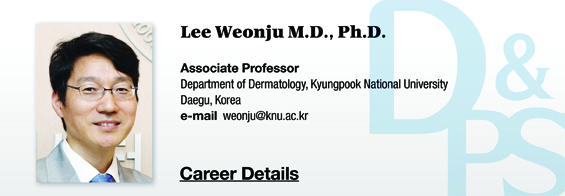▶ Previous Artlcle : #5-2. Sunscreen overview
Throughout history, humans have always strived for beautiful hair. We use many hair products in our daily lives such as shampoo and conditioner for cleansing, hair oil or serum for shine and strength as well as mousse or gel for styling. Some women like to wear their hair long and straight whereas others like to perm their hair for luscious curls. Hair coloring is also commonly used for personal styling. As hair makes such an important part of a person’s appearance, many products are used for different hair styles. There are as many hair products as those of facial cosmetics and this article will focus on hair coloring products.
Hair coloring, dye or tint are some of the terms used to describe the practice of changing the hair color. Hair is colored to cover the graying hair, improve one’s looks or for professional reasons. Hair coloring started in Ancient Egypt. In the ancient times, herbal ingredients such as a plant root, flower, fruit, peel, etc. were used. Nowadays, there are a wealth of different synthetic and chemical hair dyes available. Hair coloring is usually done at a professional salon but many recent products allow easy DIY hair coloring at home. It is therefore important for dermatologists to be knowledgeable about side effects, characteristics of different ingredients and method of coloring, etc. of various hair dyes.
[Advertisement] FCR® (Fractional Prickle CoralCalcium Regentron) – Manufacturer: (www.thermoceutical.asia)]
Types of hair dyes
Traditionally, hair dyes can be divided into temporary, semipermanent and permanent hair dyes. Products are categorized based on chemical synthesis of hair pigments or degree of absorption based on molecular size or weight.
A temporary hair dye has large molecules and is not absorbed into the hair cuticle. It provides a temporary coating of the cuticle and can easily be removed by shampooing. Types of temporary hair dyes include color shampoo, conditioner, coloring spray, hair mascara, hair crayons, color powder, color gel or mousse, and color cream, etc.
Color shampoo and conditioner contain hair dye ingredients mixed in water. They are able to maintain the color until the next washing. A color spray is a aerosol type coloring agent that can be sprayed over the hair. A hair mascara is used for partial coloring of the hair. A color crayon is a mixture of soap or synthetic wax in a stick form also used for partial coloring of the hair. Color powder is a powder form of temporary hair dye also used for partial coloring. Some powders contain glitter for sheen. Temporary hair dyes are only short-lived and can fade from friction, sweat or moisture.
Semi-permanent hair dyes are ideal for people who seek to change their hair colors to match their clothing styles. The duration of semi-permanent hair dyes is about 4-6 weeks but can vary depending on hair conditions and the length of exposure to the coloring agent. The pigment particles of semi-permanent hair dyes are smaller than those of temporary hair dyes and larger than those of permanent hair dyes. The pH level in the weak alkaline range of 8.0~9.0 expands the hair shaft and pigment particles can penetrate the shaft surface. As it is weak alkaline, the penetration is not deep. Semi-permanent hair dyes remain on or slightly below the cuticle and are gradually lost with each washing.
Types of permanent hair dyes include plant-derived, metallic, and synthetic hair dyes, etc. Herbal hair dyes use the mechanism of fruit or flower pigments that color the keratin in acidic solution. Henna is the most widely used type of herbal hair dyes. Metallic hair dyes are rarely used due to severe damage to the hair. Synthetic hair dyes are the most widely used in this category. They consist of a developer containing the active ingredients of oxidation dye and alkali and the coloring agent containing oxidizing agents such as hydrogen peroxide. The two are mixed before application. An alkali such as ammonia in the developer expand and soften the hair shafts and at the same time dissolves hydrogen peroxide in the coloring agent to create oxygen radicals. This in turn disintegrate melanin pigments enabling the oxidation dye to color the hair. Synthetic hair dyes have excellent effect and can bring the desired color and brightness in most cases. Synthetic hair dyes have particles small enough to penetrate the cuticle. Once absorbed into the hair shaft, hydrogen peroxide expands the particles to fix them into the hair, resulting in the permanent coloration.
-To be continued-
▶ Next Artlcle : #6-2. Types and Components of Hair Dyes





















